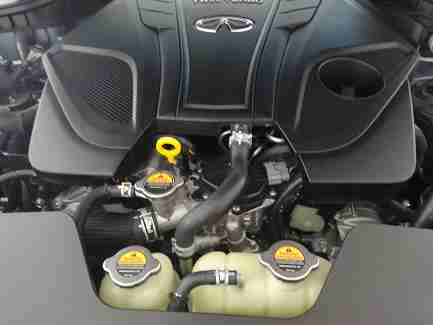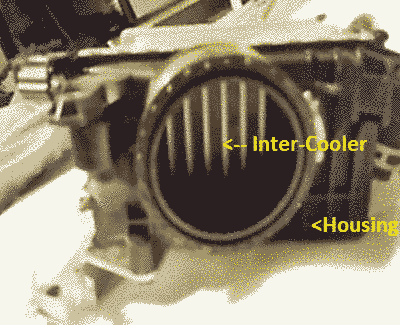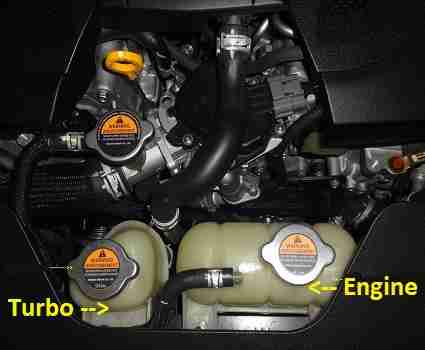Infiniti Q50 Problems Covered Under Warranty
Before we can talk about the Infiniti Q50 problems covered under warranty we should cover the details about the limited warranty that comes with the automobile.
Infiniti, the luxury arm of Nissan has been building the Q50 model for a decade. The first official model year launched in 2012 as a 2013 model.
As I explained in my previous article the five things your Q50 needs, I purchased one of these cars for myself. Although I like the automobile we can't say it's maintenance and mechanical failure history is without a few inherent problems along the way.
That's why we need to understand the warranty coverage on the automobile before we continue this article. The new model coverage breaks down like this, 4 yr/60,000 mile basic bumper to bumper, 6 yr/70,000 mile powertrain.
This applies to the high performance Red Sport and the Standard Q. Therefore, many of these vehicles find themselves outside of the warranty period.
I recommend checking with your dealership and asking them to run an in-service date report that tells you exactly when the warranty started and therefore when the warranty will expire. Your friendly local service advisor will be happy to do this for you.
 2019 Q50 Engine Compartment
2019 Q50 Engine CompartmentSo this begs the question, what happens if you experience a problem of major expense outside the warranty parameters. Unfortunately, the short answer remains that you're out of luck.
The long answer states, let's find out exactly what's wrong with the car and find out if there is any additional warranty coverage for this particular failure.
Sometimes if the failure of a particular model automobile becomes so widespread the manufacturer might uncover part supplier issues or other problems causing unexpected failure of a particular component.
At that point the manufacturer has a decision to make. They could let their customers suffer or they could step up and provide assistance.
In addition, keep in mind that if a part fails due to lack of maintenance, modification of other components or general abuse the dealership and Infiniti maintain the right to deny coverage even if the vehicle still has factory warranty coverage.
Turbocharger Q50 Problems Covered Under Warranty
Premature failure of the turbocharger is something that I'm concerned with on my own 2019 model Q50. Also keep in mind that you have two of these turbochargers mounted below the exhaust manifold on either side of your V-6 engine.
Fortunately, I haven't had any problems but I have certainly heard of others with turbocharger failures. First let's talk about how much this repair could cost you or me. Although, it depends where you live in the country, a general breakdown of parts and labor costs looks like this in my area.
A brand-new turbocharger from Infiniti cost around $1500. The labor to install said turbocharger also cost in the neighborhood of $1500. Although you might be able to shop around and knock a few hundred bucks off of the price I'm generally speaking of a $3000 repair.
Also note that with supply chain disruptions these components remain difficult to attain. As far as turbocharger problems on the Q50, I've seen people discuss several different types of premature failure. Problems often begin with the driver hearing unusual noises as the unit spools up to apply pressure to the intake manifold.
This could be a sign of internal impeller bearing failure. Turbochargers receive lubrication through a supply of engine oil. Therefore, the quality and maintenance frequency of that engine oil becomes important.
With that said, over boost problems can also cause damage to the turbocharger impeller and even the bearings themselves. They control the amount of boost produced by the unit using a waste gate valve and solenoid.
These components relieve the pressure when it reaches the ideal point. If the waste-gate fails to open then the turbocharger can over boost and tear itself apart. There are sensors and of course the vehicles main computer to manage the level of boost and the operation of the waste-gate solenoid.
For most owners they've experienced premature failure of the turbocharger while still within the warranty period. However, some people have experienced repeat failures outside of the warranty time or mile specifications. I
f you find yourself in the latter group, staring down the throat of the big repair bill, make sure you give Infiniti a call and tell them about the situation.
Customer service will review the records of the automobile and provide you with a case number. I'm not saying that financial help is guaranteed. In fact, I would say assistance with a turbocharger problem relies on many factors.
 Q50 3.0L Turbo Inter-Cooler
Q50 3.0L Turbo Inter-CoolerPlease remember when you ask for assistance, the manufacturer manages each individual situation and the results can vary widely based on different criteria. Things like how far the vehicle went passed the warranty coverage can make a big difference.
However, the general speculation remains that if you're a valued Infiniti customer, have purchased several vehicles and have performed all of your maintenance at the dealership where the vehicle is currently in for service, they're motivated to provide assistance outside of the warranty parameters.
When I say assistance I don't think they'll pay the whole bill. In fact, often you'll find they'll pay for parts and you pay for labor. Unfortunately, not an ideal situation, but it's better than nothing. You can contact Infiniti customer service via email or reach out to them by phone.
Q50 Coolant Leak Problems Covered Under Warranty
 3.0L Q50 Coolant Reservoir Diagram
3.0L Q50 Coolant Reservoir DiagramUnfortunately, Q50 coolant leak problems remain a common issue. It's been going on for years and your malfunction might be covered under warranty. The first thing we have to talk about is the two reservoirs you'll see when popping the hood.
With the hood raised, standing in front of the vehicle and looking down, the smaller coolant reservoir on the left we call the turbo or inter-cooler coolant reservoir. The larger container on the right side we call the engine reservoir. Note that many consider the stock tiny inter-cooler reserve tank a performance killer.
However, they make an upgrade kit that includes a modified tank and it holds 70% more coolant. This provides increased tolerance for leaking, but also provides increased efficiency for cooling the intake charged air. AMS Alpha Performance makes a direct replacement requiring no modification.
Unfortunately, when I say Q50 coolant leak problems remain a common issue for the automobile I'm actually talking about leaks lowering the reserve in both reservoirs or both systems. Let's talk about the turbocharger side of the coolant system first. Coolant flows through the inter-cooler to chill the air that is pressurized and headed towards the intake manifold. Some drivers note that over a short period of time this reservoir continually seems low.
The secondary symptom of the condition becomes an obvious coolant leak with nothing dripping from the vehicle and no signs of actual wetness or coolant leaking. The most common cause at this point and time remains a leaking inter-cooler assembly.
This miniature radiator has coolant fins and delicate aluminum piping that remains capable of developing minuscule leaks. It's also possible that a damaged or malfunctioning turbo charger as described above in the turbo charger failure section will also leak a small amount of coolant.
The reason you never see anything hitting the ground is because the tiny coolant droplets are picked up by the flowing air, pushed into the intake manifold and burned in the combustion chamber. These leaks usually remain so small that you won't even notice any white smoke from the tailpipe emissions.
However, when this leak becomes more aggressive you'll see white vapor from the exhaust. The smaller inter-cooler reservoir doesn't hold much fluid and therefore requires frequent checking. Continually finding it necessary to add to the container becomes a strong indication you need the vehicle looked at by the dealership.
Infiniti Q50 Engine Coolant Leaking
What is the most likely cause when the engine coolant reservoir requires frequent top off? This question becomes a little more complicated than a coolant leak on the turbo side of the system.
Since this is an automobile with an engine it's always possible that a loose hose clamp or a leaking hose can become the source of the issue. However, with these types of problems you'll often find coolant dripping on the ground and trails of wetness leading to the source of the problem.
With that said, if the leak is slow enough and the coolant is dripping on an exhaust manifold this can hide the problem until the leak picks up speed. Unfortunately, we have one other problem to discuss. This is an issue known as a porous engine block. Think of porous as tiny pin holes throughout the block.
The root cause stems from too much air in the aluminum casting process during manufacturing. Over time and mileage, those pin holes lead to cracks due to stresses in the casting from the cold to hot thermal cycling of daily use. Finally, you get coolant transferred out of the water jackets to the oil, or the engine burns the coolant in the combustion chamber.
I'm not sure about the exact numbers of vehicles affected by this condition or when they corrected the casting issue. I tried to find specific dates, but at this time I'm finding conflicting information.
I can tell you the manufacturer addressed the issue on the newest models. Therefore, the older models from the year 2013 through 2018 seem the unlucky vehicles that could possibly have an internal coolant leak.
Just like the inter-cooler leak in the turbo system if you have a porous engine block you won't find drips of coolant on the ground. In the porous engine block situation you may see no outward signs of the disappearing coolant.
However, there is one sure way to find out if your vehicle is suffering from an internal engine coolant leak. You can take an oil sample and send it out to a reputable third-party engine oil testing company to see if the engine oil shows signs of this type of coolant leak.
Take a look at the Maintenance section or head back to the Homepage.
Author bio : Mark is a retired ASE certified master technician, Chevrolet Professional Service Council member and the founder of FixMyOldRide.com. Watch the video on the about Mark the mechanic page to see his credentials. Mark hand writes all of the articles on FixMyOldRide.com unless indicated otherwise.